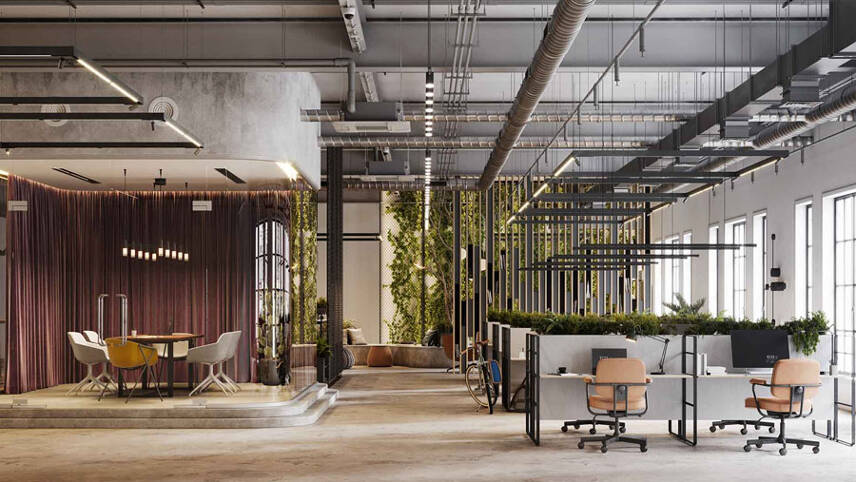Register for free and continue reading
Join our growing army of changemakers and get unlimited access to our premium content

As fossil fuels still make up a staggering 80% of the global Total Energy Supply (TES), it is imperative that we take immediate action to combat global warming and climate change. Transitioning to renewable energy sources and reducing emissions is a critical global imperative. A significant part of the challenge lies in the operation of the world’s buildings, which currently account for nearly one-third of global final energy consumption. Alarmingly, this figure is projected to more than double by 2050. It is about time we acknowledge the pressing issue of wasted building energy – the proverbial elephant in the room. A staggering 60% of energy is currently lost or wasted, highlighting the urgent need for more efficient and effective energy utilisation.
The adage “the only constant is change” has never felt more applicable than over the last few years when we consider the energy crisis and the impact that it has had globally. Fluctuations in the supply and cost of energy are sadly no longer a rarity, and this volatility falls on the shoulders of consumers and businesses.
Changes in energy bills can have a huge impact on the bottom line of many businesses, leaving many to reassess the energy that they consume. To help businesses move from intention to action, here are three tips on how to get started on their energy efficiency journey.
-
Enhance building efficiency by carrying out an energy audit
All but the most recently constructed or retrofitted buildings will be lacking in efficient heating, ventilation, air conditioning, and smart technology to manage energy use.
An energy assessment, which involves monitoring metering data over the course of 12 months, can help to identify opportunities for improvement, such as reducing energy wastage, optimising the energy consumed, and digitising energy usage and monitoring for much better insights for decision making.
Taking this a step further, a full efficiency audit looks not only at electrical processes but also mechanical and thermal processes. This means machinery and insulation are considered, not just looking at electrical energy but preventing heat waste and ensuring machines are up to date and working optimally.
The best way to get started is to have a clear view of where energy is being wasted in a building by auditing electrical, thermal, and mechanical processes as well as automations, schedules, and individual pieces of equipment. Based on the findings from the analysis it’s then possible to design a customised solution to improve the site and support businesses with their energy efficiency journey.
-
Build an action plan
Once facilities and buildings managers have the information and insights into how the building is operating in terms of energy efficiency, they need to build a comprehensive plan for both the short-term, medium, and long-term. If the analysis has already been carried out, external experts can support with designing a practical action plan tailored to the building’s unique needs. By understanding exactly where energy is wasted, they can either choose to retrofit a building and update the heating and air-conditioning units or they can simply identify opportunities to optimise energy usage using the existing equipment.
Executing an effective energy efficiency strategy can sometimes involve electrifying operations, reducing energy usage, and optimising energy sources. The multi-faceted approach depends on various factors, including the necessity to change the PPE or switch to renewable energy sources such as microgrids to achieve sustainability goals and ensure a greener future.
-
Utilise efficiency and resource allocation with managed services
Instead of dedicating people and internal resources to monitoring certain processes, businesses can significantly improve energy efficiency by leveraging managed services. This proactive approach involves third parties monitoring critical assets and/or energy consumption on behalf of the company. Through services such as Schneider Electric’s Connected Services Hub, dedicated providers can continuously monitor and promptly flag inefficiencies and abnormalities as they arise. This streamlined approach empowers internal teams to concentrate on driving business growth, ultimately leading to a more sustainable and profitable future.
By taking these steps, businesses can not only reduce their environmental footprint but also optimise their operations, save resources, and enhance their bottom line. With only 7% of businesses delivering on their sustainability plans, and over 40% relying on strategic support from partners to achieve their environmental targets. It is evident that more can be done.
Taking a more proactive approach to energy management contributes to the collective effort to combat the energy crisis. The time for action is now. Embracing these strategies paves a practical pathway for company operations to transition towards a more sustainable and efficient future.
To find out more about how Schneider Electric can support you on your energy efficiency journey, register here for your free remote energy assessment today.



“60% of energy is lost or wasted”?? Surely all energy is eventually lost. The wasted part is reflected in the efficiency of the purpose of the process. If the objective is heating, then many processes are very efficient! “It all depends” as my mother often told me!!